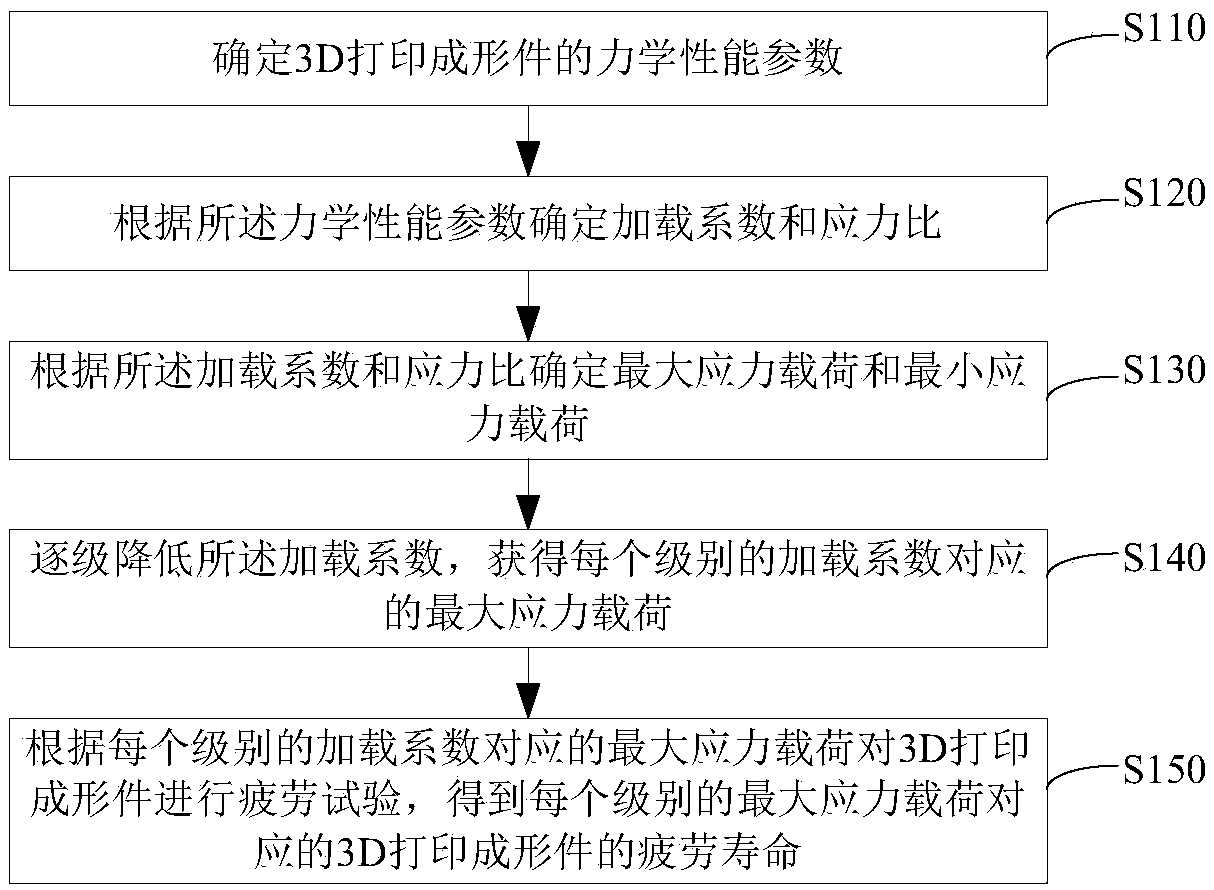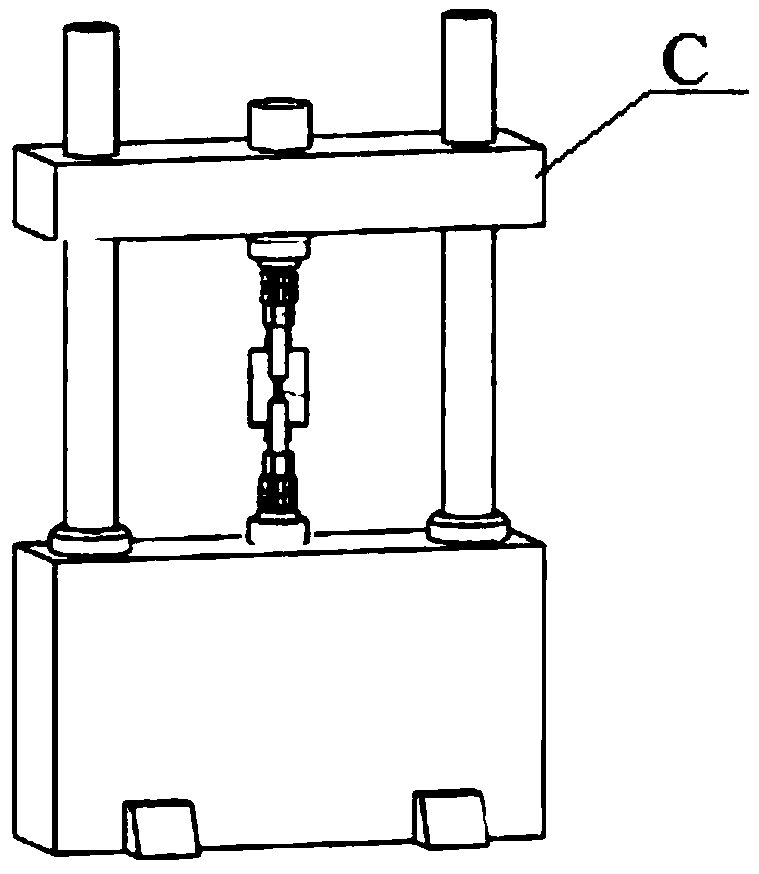Method for testing fatigue performance of 3D printed part
A fatigue performance testing and 3D printing technology, applied in the testing of mechanical parts, the testing of machine/structural parts, the testing of elasticity, etc., can solve the problems of affecting fatigue performance, rough surface, and the density is not as good as casting parts.
- Summary
- Abstract
- Description
- Claims
- Application Information
AI Technical Summary
Problems solved by technology
Method used
Image
Examples
Embodiment Construction
[0031] Specific embodiments of the present invention will be described in detail below in conjunction with the accompanying drawings. It should be understood that the specific embodiments described here are only used to illustrate and explain the present invention, and are not intended to limit the present invention.
[0032] As an aspect of the present invention, a method for testing the fatigue performance of 3D printed parts is provided, wherein, such as figure 1 Shown, the fatigue performance test method of described 3D printing formed part comprises:
[0033] S110. Determine the mechanical property parameters of the 3D printed part;
[0034] S120. Determine a loading factor and a stress ratio according to the mechanical property parameters;
[0035] S130. Determine a maximum stress load and a minimum stress load according to the loading factor and the stress ratio;
[0036] S140. Decrease the loading factor step by step to obtain the maximum stress load corresponding t...
PUM
 Login to View More
Login to View More Abstract
Description
Claims
Application Information
 Login to View More
Login to View More - R&D
- Intellectual Property
- Life Sciences
- Materials
- Tech Scout
- Unparalleled Data Quality
- Higher Quality Content
- 60% Fewer Hallucinations
Browse by: Latest US Patents, China's latest patents, Technical Efficacy Thesaurus, Application Domain, Technology Topic, Popular Technical Reports.
© 2025 PatSnap. All rights reserved.Legal|Privacy policy|Modern Slavery Act Transparency Statement|Sitemap|About US| Contact US: help@patsnap.com



